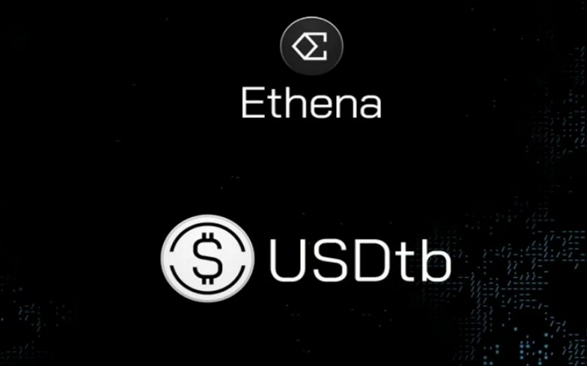For years, cross-border transactions have been a significant pain point for individuals and businesses alike. The process is often slow, expensive, and cumbersome, with transactions taking days or even weeks to settle. The high fees associated with these transactions can be crippling, especially for small businesses and individuals in developing countries. However, a new partnership between FinTechs including Flutterwave, Yellow Crad, and OnAfriq and Circle Payments Network (CPN) promises to change the game.
In a recent announcement, Flutterwave revealed that it has joined CPN, which it described as “the world’s largest, most widely-used stablecoin network.” This move is part of Flutterwave’s mission to simplify global payments for African enterprises and the diaspora. By leveraging CPN, Flutterwave aims to offer real-time, low-cost, and compliant cross-border payments, making it easier for businesses to expand beyond borders. For Yellow Card and OnAfriq, the idea isn’t different. It’s all about enabling cheaper, easier, and faster cross-border payments leveraging stablecoin innovation.
Flutterwave, Yellow Card, OnAfriq and the USDC Stablecoin Leverage
According to Flutterwave in its X post announcing its membership of CPN, the partnership will enable businesses to expand beyond borders with ease, facilitating economic growth and development. This development is a significant step towards making cross-border transactions more efficient, affordable, and accessible.
The partnership strongly suggests that Flutterwave as well as Yellow Card and OnAfriq, are exploring the use of USDC stablecoin for cross-border transactions. Here’s why:
- Stablecoin Network: Flutterwave describes CPN as “the world’s largest, most widely-used stablecoin network”, indicating that CPN likely utilizes stablecoins like USDC for its operations.
- Real-time, Low-cost Payments: By partnering with CPN, Flutterwave, Yellow Card, and OnAfriq aim to offer real-time, low-cost, and compliant cross-border payments. Stablecoins like USDC are known for facilitating fast and low-cost transactions, making them a suitable fit for this application.
- Previous Experience with USDC: Flutterwave has previously integrated USDC for merchant settlements on the Hedera Hashgraph platform. This demonstrates its familiarity with the stablecoin and its potential benefits for cross-border transactions. Also, Yellow Card, a crypto platform, is already a native in the ecosystem.
This move could potentially reduce transaction costs and increase speed, making cross-border transactions cheaper, easier, and faster. With USDC, transactions can be settled in real-time, eliminating the need for intermediaries and reducing fees.
The Newly-launched Circle Payments Network
Circle Internet Group, Inc., a leading global financial technology company, announced the launch of Circle Payments Network (CPN) on April 22nd. The CPN connects financial institutions, including banks, neo-banks, payment service providers, virtual asset service providers (VASPs), and digital wallets, to enable real-time settlement of cross-border payments using regulated stablecoins like USDC and EURC.
The CPN marks a new chapter in Circle’s evolution, expanding its offerings beyond trusted stablecoins and developer platforms to power a globally connected payments network. CPN aims to address the challenges faced in cross-border transactions by providing a modern way to move money globally with the speed, transparency, and programmability of the internet.
CPN will enable a broad spectrum of cross-border money movement use cases, including supplier payments, remittances, payroll, capital markets settlement, internal treasury operations, and on-chain financial applications. The network has already garnered significant interest, with design partners like Alfred Pay, BCB Group, BVNK, and Standard Chartered Bank collaborating to unify disparate payment networks and local currencies. Flutterwave has also joined the network.
“Since our founding, Circle’s vision has been to make moving money as simple and efficient as sending an email,” said Jeremy Allaire, Co-Founder, Chairman, and CEO of Circle. “CPN is a significant step in making that vision a reality for businesses worldwide.”
With CPN, Circle is poised to revolutionize the cross-border payments landscape, providing a more efficient, secure, and compliant way to move money globally. As Nikhil Chandhok, Chief Product and Technology Officer at Circle, noted, “Circle Payments Network is a foundational layer for the always-on economy—enabling trusted institutions to move value across borders, instantly.”
CPN is expected to be released in a limited capacity in May, and duly licensed financial institutions can learn more and sign up to become network participants. As part of the CPN membership requirements, only banks, FinTech’s, PSPs, VASPs, and other financial institutions with a minimum of $1m average monthly transaction volume and a relevant license are eligible to join the network.
Apart from Flutterwave, some other members of the CPN include BVNK, Fireblocks, Onafriq, Transfero, and Yellow Card.
Read also: US Dollar Stablecoins hit $230 Billion, dominated by professional flow
Industry Reactions
The launch of CPN has been met with enthusiasm from industry players, who see it as a game-changer for cross-border payments. “Circle’s compliance-first approach to building products like CPN is a game changer for how money moves across borders,” said Michael Spiegel, Global Head of Transaction Banking at Standard Chartered Bank.
Speaking with CAB, Nathaniel Luz, CEO of Flincap believe that collaboration is what the space needs in cross-border payments: “Cross-border payment services require collaboration with other international players, and this initiative by Flutterwave, Yellow Card, and other members of the network is just what is needed in the space.”
“Providing optimal payment services is about building the best systems and the best systems require collaboration. This move by Flutterwave is a plus, asserting their position as one of the FinTech giants in Nigeria and Africa,” stated Luz.
“It’s a good development”, reacted Chiagozie Iwu, Head of Product and Technology at Ledig Technologies, when he was contacted by CAB about the development. Iwu is bullish about the possibilities in payments which Circle is enabling, believing that it will help make cross-border payments a breeze. Iwu observed that “Circle is doing a very good job, especially with its USDC stablecoin. Circle makes compliance a very keyword. While USDT by Tether is very big, enabling whole remittances, and emerging economy-focused, USDC seems to be more compliance-focused, and it’s making it the perfect stablecoin in places like Europe”, Iwu observed.”
Taking a deeper dive into the integrations that stablecoin innovation is enabling in the payment system, Iwu believes that a Circle-like solution is the way to go in order to deal with the pain points experienced in cross-border payments: “A lot of facilitation has been going on under the scenes in terms of fiat-to-crypto payment systems, and Circle has been key in integrating that. So, this Circle Payment Network, which a number of top payment companies are becoming a part of, is going to make off-ramping USDC even smoother. It’s going to make payment in Nigeria, which is a headache, much easier. Here, you have a scenario where you are trying to make a USD payment—even with the fintech-offered USD cards—but your cards don’t work everywhere. This type of payment problem is going to be solved by a stablecoin or this Circle-like solution.”
“With different people plugging into this Circle network”, Iwu continued, “and I think Yellow Card is in the network as well, it’s going to make cross-border retail payment seamless and easy. Even at Ledig Technologies, we’ve been at the forefront of seeing what these payment solutions can do. We’ve seen a lot of high-ticket payments being stablecoin-enabled that could not have occurred without stablecoin. Circle is making these integrations a click of a button easy.”
Also in his words to CAB about the CPN, Chris Maurice, CEO of Yellow Card, which is also a member of the network, asserted that “Stablecoins globally are being used for payments, and Circle is building technology to help better enable that.” Maurice believes that the move is “an important step for the company”.
Lastly, Iwu believes that considering Circle’s noticeable compliance-first approach, members of the CPN should not expect frictions with adoption: “Flutterwave, I believe, is the biggest PSP in Africa. So I expect that it’s going to make cross-border retail payment even easier. It will be cool to see how these integrations will go and what the interactions with other companies within the network will be. Circle is one of the most compliant crypto companies in the world, so I don’t expect there will be problems with utilization, even in our part of the world.”
Read also: Circle and Binance partner to boost global USDC and crypto adoption.
Conclusion
As the fintech industry continues to evolve, partnerships like this will play a crucial role in shaping the future of global payments. With Flutterwave’s extensive reach in Africa and CPN’s stablecoin network, this partnership has the potential to make a significant impact on the continent’s economic landscape. Similarly, Yellow Crad, OnAfriq, and others will be pushing the boundaries of cross-border payments, enabling improved speed and efficiencieny in this regard, particularly for their African users.
Regarding the introduction of CPN, this is set to play a significant role in shaping the future of cross-border payments. CPN has the potential to increase efficiency, reduce costs, and enhance transparency in global transactions. However, where this innovative solution leaves local-currency backed stablecoins such as the cNGN for example and the central bank digital currencies such as the eNaira in Nigeria is yet to unravel. The thrust here remains the need for improved cross-border payment solutions that are as smart as today’s smart economy.
Read also: The US Government harnesses stablecoins to bolster Dollar’s global dominance
Discover more from Crypto Asset Buyer
Subscribe to get the latest posts sent to your email.




